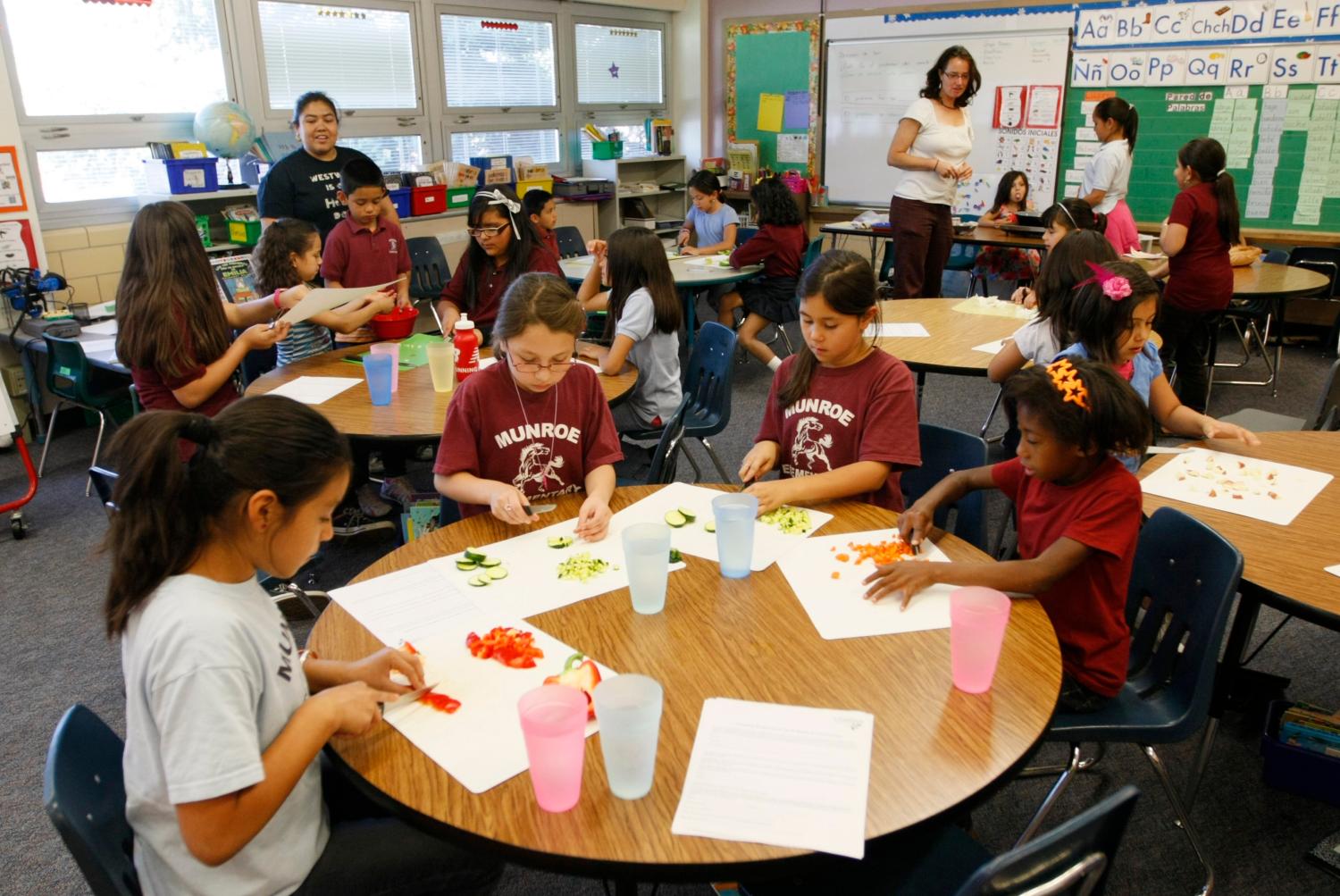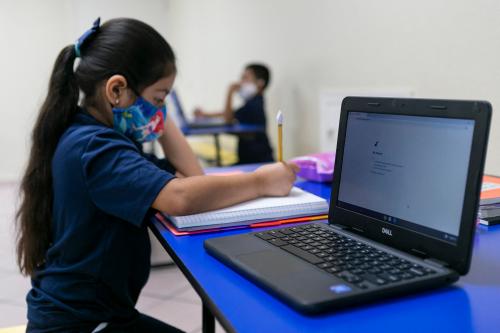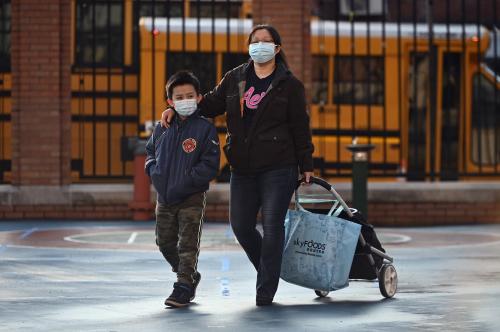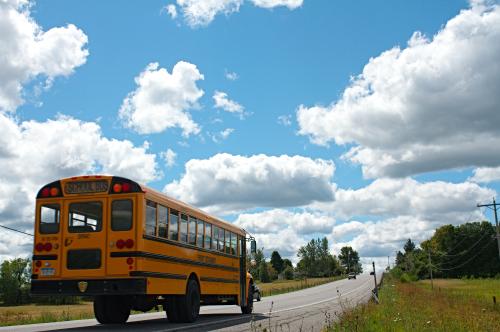Since schools shut down in March, educators and parents have been preoccupied with the here and now—getting kids connected, putting lessons online, helping parents and kids cope with unfamiliar ways of learning, and (for parents) finding time to be co-educators while doing their own jobs and keeping households afloat. Against this background of striving, education hasn’t looked very political.
But appearances are deceiving: Pre-COVID-19 politics have continued. Unions have worked to make sure that remote learning happens on teachers’ terms while making sure any deviations from labor contracts are not permanent. Many district leaders have not offered full grade-level instruction online, thus avoiding conflicts over reallocating funds or eliminating any existing programs. Some charter leaders can point to their schools’ innovation and responsiveness during the shut-down, but old debates over whether charter schools should be allowed to expand continue unabated.
New interests and new conflicts will become apparent when schools open in the fall.
- Parents of color, low-income parents, and teachers will demand quick action, both on problems of connectivity and learning loss that plagued children during the shutdown, and on more general improvements in instruction and student services.
- Teachers will split between those who want to return to the classroom and those who fear the health risks, or want to keep using distance learning methods they consider effective, or are afraid of the health risks to their own children and want to stay home with them.
- Parents will split between those who want full-time brick-and-mortar schooling, those who fear it, and those who have come to value their roles in distance learning.
- Special education parents will insist they have waited long enough for schools to educate their children via mixtures of remote and in-person services.
- Local colleges and universities, strapped for enrollment, will want to provide courses for high school students, as will online vendors who filled holes during the crisis.
- States will expand virtual offerings that allow families to enroll in online coursework outside of district confines, thereby threatening revenues tied to enrollments.
- Employers will want many workers to leave their homes and spend daytime hours at work, not supervising kids’ lessons. Commercial real-estate owners will also be desperate for adults to return to traditional places of work so companies will keep paying rent.
School districts will also face internal tensions as they try to reopen schools, keep them clean and safe, and improve blended and online learning opportunities—all while dealing with large and repeated budget cuts. District leaders will have difficult trade-offs to make among teacher salary levels, staff furloughs, central office units, new investments in connectivity, and spending directly on instruction. Without the resources to do everything needed at once, districts are sure to disappoint someone.
Tensions will be highest in large cities with diverse populations, complex economic bases, and possibly irreconcilable differences between schools’ and employers’ demands on parents’ time. Places with relatively high numbers of private and charter schools might find that these schools offer relief valves for parents with the resources, tastes for remote learning, or needs for child care. Rural communities may face less-organized opposition but will have to deal with tough budget realities.
State government could lighten or exacerbate local conflicts. It all depends on whether state guidance and resources help school districts factor in the needs of employers, parents, and other constituencies, or arbitrarily limit flexibility. Many states are convening task forces on the return of school, but these are unlikely to resolve conflicts over funding cuts and schooling strategies. In an election year, moreover, top state officials will have other concerns; any work done now might be overturned if offices change hands in early 2021.
Things could stay quiet until September, with tensions gradually building during the fall. Or, employers and city governments could get the ball rolling soon by raising issues about compatibility of school and work schedules. Unhappy groups will seek to amplify their effectiveness by joining coalitions (e.g., among families of different income groups whose jobs prevent them from supervising children in the daytime). Other possible coalitions could include employers and parents who want more predictable school schedules; or higher education institutions and online instruction providers who want to receive public funds if families choose their services.
It’s hard to believe that district leaders won’t be up to their necks in political conflict by the time schools reopen after New Year’s Day 2021, just as they most need allies to limit budget cuts. Districts will also need help from organizations that they previously kept at arm’s length—sports leagues, music and drama organizations, recreation centers, health-care providers, and civic groups that can replace student service programs that districts can no longer fund.
Superintendents or mayors might get ahead of events by taking stock of problems that emerged during spring remote learning and addressing the biggest pain points faced by parents and teachers. There is no faster way to earn enemies than botching implementation a second time, when the need for change was evident. They could also focus on developing multiple options that can satisfy teachers’ and parents’ diverse needs for both good instruction and flexibility in how that instruction gets delivered. For example, different schools might offer full-time remote, partially remote, and full-time in-person options. Districts could also expand access to homeschooling programs for families that prefer to use their own curriculum but could benefit from some support from district teachers.
The federal government could at least partly mitigate the need for controversial spending cuts by providing emergency financial help. But the amounts now proposed are not enough to resolve the issues.
Starting next fall, just as schools are in the middle of the most difficult reopening period in history, many district leaders will face chaotic politics: teachers and parents speaking with multiple voices; advocates for the disadvantaged and advantaged alike mobilized; groups that were once mild boosters becoming critics; and state and federal governments moving in new directions. The newly energized interests will have their own ideas about how hard to press their points and how much to compromise in order to gain allies. Teachers’ unions, long the dominant forced in local education politics, will endure their own internal divisions, and face a lot more competition.
This will work itself out before us very soon, and the local politics of education will never again be the same.
The Brookings Institution is committed to quality, independence, and impact.
We are supported by a diverse array of funders. In line with our values and policies, each Brookings publication represents the sole views of its author(s).









